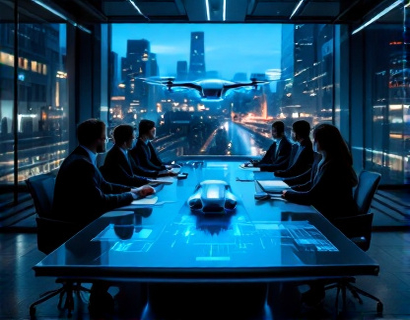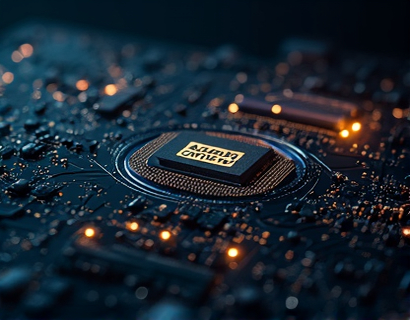Aerospace Technology Breakthroughs: Driving Efficiency and Safety Advancements
The aerospace industry stands at the forefront of technological innovation, continuously pushing the boundaries of what is possible in both aviation and space exploration. Recent breakthroughs in aerospace technology have significantly enhanced efficiency and safety, setting a new standard for the industry. This article delves into the latest advancements, exploring how these innovations are reshaping the future of aerospace engineering.
One of the most significant advancements in aerospace technology is the development of more efficient propulsion systems. Traditional jet engines have been improved through the integration of advanced materials and aerodynamic designs. For instance, the use of composite materials in engine components has reduced weight while maintaining strength, leading to better fuel efficiency. Additionally, the adoption of open rotor engines, which feature large propellers, has shown promising results in reducing fuel consumption by up to 20% compared to conventional turbofans. These engines are designed to operate at higher efficiencies across a broader range of flight conditions, making them ideal for long-haul flights.
Another critical area of innovation is in the realm of electric and hybrid propulsion systems. Electric propulsion offers the potential for quieter, more environmentally friendly aircraft. Companies are developing electric motors and batteries with higher energy densities, which are essential for powering larger and more efficient aircraft. Hybrid systems, which combine traditional jet engines with electric motors, are also being explored. These systems can provide additional thrust during takeoff and landing, reducing fuel usage and emissions. The integration of electric propulsion not only enhances efficiency but also paves the way for more sustainable aviation.
In the domain of avionics, the integration of advanced sensors and data processing technologies has revolutionized flight operations. Modern aircraft are equipped with sophisticated flight management systems that utilize real-time data from various sensors to optimize flight paths and reduce fuel consumption. These systems can adjust altitude and speed based on wind conditions, air traffic, and other factors, ensuring the most efficient route. Furthermore, the use of artificial intelligence and machine learning algorithms allows for predictive maintenance, reducing downtime and enhancing safety by identifying potential issues before they become critical.
Safety advancements in aerospace technology are equally impressive. One of the most notable developments is the implementation of advanced avionics and collision avoidance systems. These systems use radar, lidar, and other sensors to detect other aircraft and obstacles, providing pilots with real-time alerts to avoid collisions. Autonomous flight control systems are also being developed, capable of taking over in emergency situations or assisting pilots in complex maneuvers. These technologies not only enhance safety but also reduce the workload on pilots, allowing them to focus on critical tasks.
Structural innovations in aircraft design have also contributed to increased safety and efficiency. The use of advanced materials such as carbon fiber composites has enabled the construction of lighter and stronger aircraft structures. These materials offer superior strength-to-weight ratios, reducing fuel consumption and improving performance. Additionally, the adoption of additive manufacturing, or 3D printing, has allowed for the creation of complex components with optimized designs that were previously impossible to produce. This technology reduces material waste and production time, making it a cost-effective and efficient manufacturing method.
In the realm of space exploration, new technologies are pushing the boundaries of what is achievable. Reusable rockets, developed by companies like SpaceX, have dramatically reduced the cost of access to space. By landing and reusing rocket boosters, the expense and time required for each launch are significantly decreased. This innovation has opened up new possibilities for satellite deployment, space tourism, and even Mars missions. The development of advanced propulsion systems, such as ion drives and nuclear thermal engines, is also underway, promising even greater efficiency and faster travel times for deep space missions.
Another area of focus in space technology is the development of autonomous spacecraft and robots. These systems can perform complex tasks without human intervention, reducing the risks associated with manned missions. Autonomous rovers and drones are being used to explore harsh environments on other planets and moons, collecting valuable data and conducting experiments. The integration of AI in these systems allows for adaptive decision-making, enabling them to navigate and operate effectively in unknown terrains.
The integration of satellite technology has also transformed various sectors on Earth, from communication and navigation to environmental monitoring and disaster management. Small satellites, or cubesats, have become increasingly popular due to their lower cost and faster deployment times. These satellites can be launched in large constellations, providing global coverage for communication and Earth observation. The data collected by these satellites is crucial for improving weather forecasts, tracking climate change, and supporting precision agriculture.
In terms of infrastructure, the development of spaceports and horizontal launch facilities is revolutionizing the way spacecraft are launched and maintained. These facilities are designed to handle multiple launches per day, significantly increasing launch frequency and reducing costs. The use of modular designs and automated systems in these facilities ensures efficient turnaround times and minimal human intervention, further enhancing safety and reliability.
The aerospace industry is also seeing significant advancements in materials science. Beyond composite materials, researchers are exploring the use of metamaterials, which have properties not found in nature. These materials can be engineered to have specific characteristics, such as negative refractive index or enhanced thermal insulation. In aerospace applications, metamaterials can be used to create lighter, stronger, and more durable components, further improving the performance and efficiency of aircraft and spacecraft.
Environmental considerations are increasingly influencing aerospace technology development. Efforts to reduce the carbon footprint of aviation include the use of sustainable aviation fuels (SAFs) and the exploration of alternative propulsion methods. SAFs, derived from renewable resources, can reduce greenhouse gas emissions by up to 80% over the fuel's lifecycle. Additionally, hydrogen fuel cells are being investigated as a clean and efficient power source for both aircraft and spacecraft. While challenges remain in terms of storage and infrastructure, the potential benefits are significant.
The collaboration between industry leaders, research institutions, and government agencies is crucial for driving these technological advancements. Public-private partnerships play a vital role in funding and accelerating research and development projects. These collaborations ensure that innovations are not only technically feasible but also economically viable and aligned with regulatory requirements. For example, initiatives like the NASA Artemis program aim to return humans to the Moon and establish a sustainable presence on its surface, leveraging cutting-edge technologies and fostering collaboration across the aerospace community.
Looking ahead, the future of aerospace engineering holds even more promise. The integration of quantum computing in flight simulations and optimization algorithms could lead to breakthroughs in aerodynamic design and mission planning. Quantum sensors, with their unparalleled precision, could enhance navigation and communication systems, further improving safety and efficiency. Additionally, the development of space-based solar power systems could provide a continuous and clean energy source for both Earth and spacecraft, addressing energy demands in a sustainable manner.
In conclusion, the aerospace industry is at a pivotal moment, driven by a wave of technological innovations that are transforming efficiency and safety. From advanced propulsion systems and materials to autonomous spacecraft and sustainable fuels, these breakthroughs are setting a new standard for the future of aviation and space exploration. As the industry continues to evolve, the potential for further advancements remains vast, promising a safer, more efficient, and more sustainable aerospace future.










































